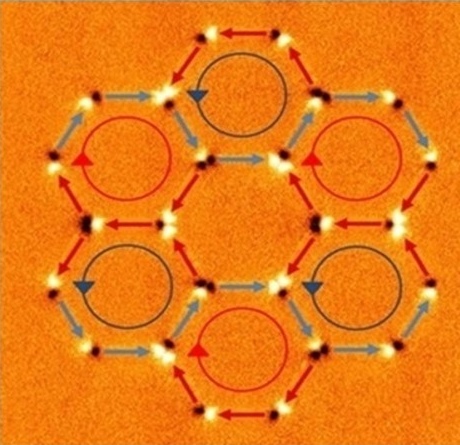Researchers have shown how to write any magnetic pattern desired onto nanowires, which could help computers mimic how the brain processes information.
Much current computer hardware, such as hard drives, use magnetic memory devices. These rely on magnetic states – the direction microscopic magnets are pointing – to encode and read information.
With this new writing method, we open up research into ‘training’ these magnetic nanowires to solve useful problems.
– Dr Jack Gartside
Exotic magnetic states – such as a point where three south poles meet – represent complex systems. These may act in a similar way to many complex systems found in nature, such as the way our brains process information.
Computing systems that are designed to process information in similar ways to our brains are known as ‘neural networks’. There are already powerful software-based neural networks – for example one recently beat the human champion at the game ‘Go’ – but their efficiency is limited as they run on conventional computer hardware.
Now, researchers from Imperial College London have devised a method for writing magnetic information in any pattern desired, using a very small magnetic probe called a magnetic force microscope.
With this new writing method, arrays of magnetic nanowires may be able to function as hardware neural networks - potentially more powerful and efficient than software-based approaches.
The team, from the Departments of Physics and Materials at Imperial, demonstrated their system by writing patterns that have never been seen before. They published their results today in Nature Nanotechnology.

'Hexagonal artificial spin ice ground state' - a pattern never demonstrated before. Coloured arrows show north or south polarisation
Dr Jack Gartside, first author from the Department of Physics, said: “With this new writing method, we open up research into ‘training’ these magnetic nanowires to solve useful problems. If successful, this will bring hardware neural networks a step closer to reality.”
As well as applications in computing, the method could be used to study fundamental aspects of complex systems, by creating magnetic states that are far from optimal (such as three south poles together) and seeing how the system responds.
-
‘Realisation of ground state and thermally inaccessible configurations in artificial kagome dipolar spin ice’ by Jack C. Gartside, Daan M. Arroo, David M. Burn, Victoria L. Bemmer, Andy Moskalenko, Lesley F. Cohen and Will R. Branford is published in Nature Nanotechnology.
Article text (excluding photos or graphics) available under an Attribution-NonCommercial-ShareAlike Creative Commons license.
Photos and graphics subject to third party copyright used with permission or © Imperial College London.
Reporter
Hayley Dunning
Communications Division

Contact details
Tel: +44 (0)20 7594 2412
Email: h.dunning@imperial.ac.uk
Show all stories by this author
Leave a comment
Your comment may be published, displaying your name as you provide it, unless you request otherwise. Your contact details will never be published.




Comments
Comments are loading...